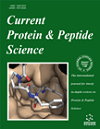
Full text loading...
We use cookies to track usage and preferences.I Understand
Sulfonamides are widely used carbonic anhydrase inhibitors (CAIs) in clinical settings, however, their nonspecific inhibition of multiple carbonic anhydrase isoforms can lead to reduced efficacy and side effects. This study aimed to develop sulfanilamide-diazo derivatives incorporating benzoic acid moieties as novel inhibitors of hCA II activity to reduce side effects and enhance selectivity for different CA isozymes.
We investigated the interaction between these derivatives and the hCA II isozyme via various spectroscopic and docking methods.
The kinetic data demonstrates that compound 1 (C1) and compound 2 (C2) share a similar inhibitory strength against hCA II, effectively inhibiting its esterase activity through a noncompetitive mechanism with Ki values at low micromolar levels. Fluorescence measurements indicated that the synthesized compounds suppressed the inherent fluorescence of hCA II via a static quenching process, with each compound showing a singular binding site within the enzyme. Thermodynamic evidences highlight the significance of van der Waals interactions and hydrogen bonding in the binding process. The results of molecular docking indicated that both C1 and C2 effectively obstruct the entrance to hCA II's active site, with no significant differences in their binding conformations.
While C1 and C2 exhibit CA inhibitory potency lower than that of sulfonamide compounds, this study offers valuable insights that could pave the way for the development of a promising scaffold for designing new carbonic anhydrase inhibitors.

Article metrics loading...

Full text loading...
References


Data & Media loading...
Supplements

